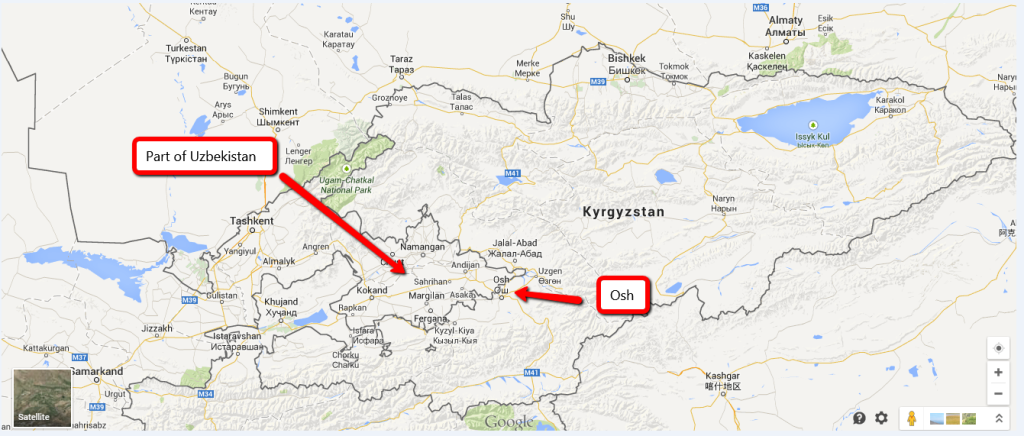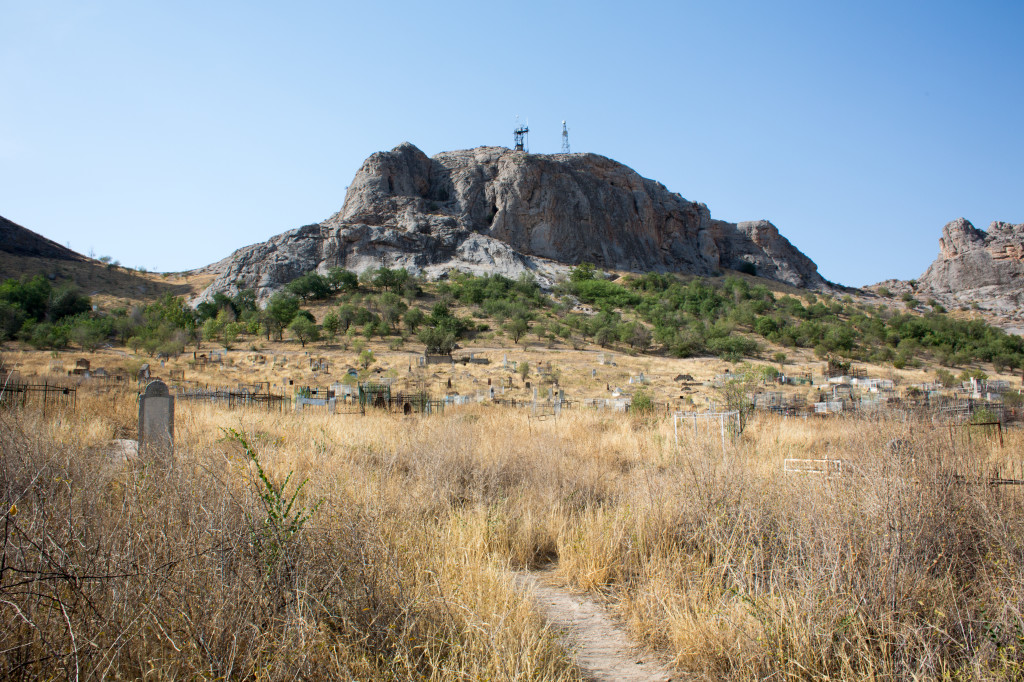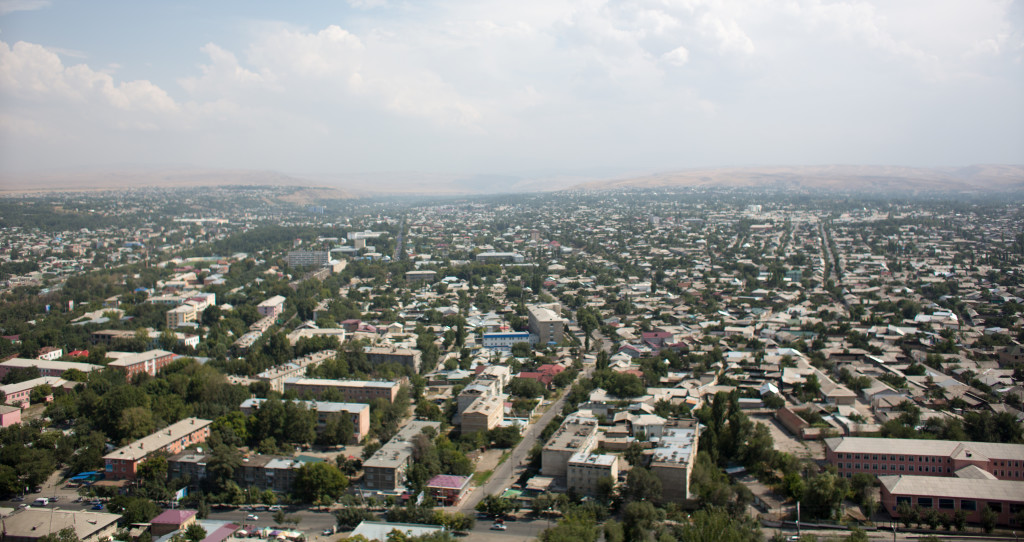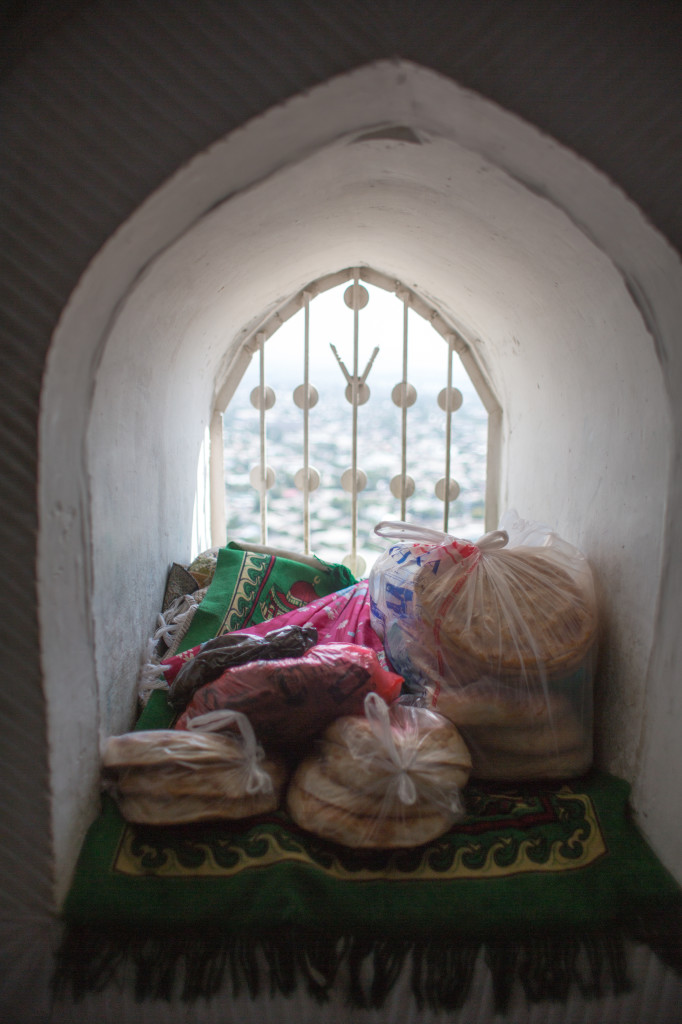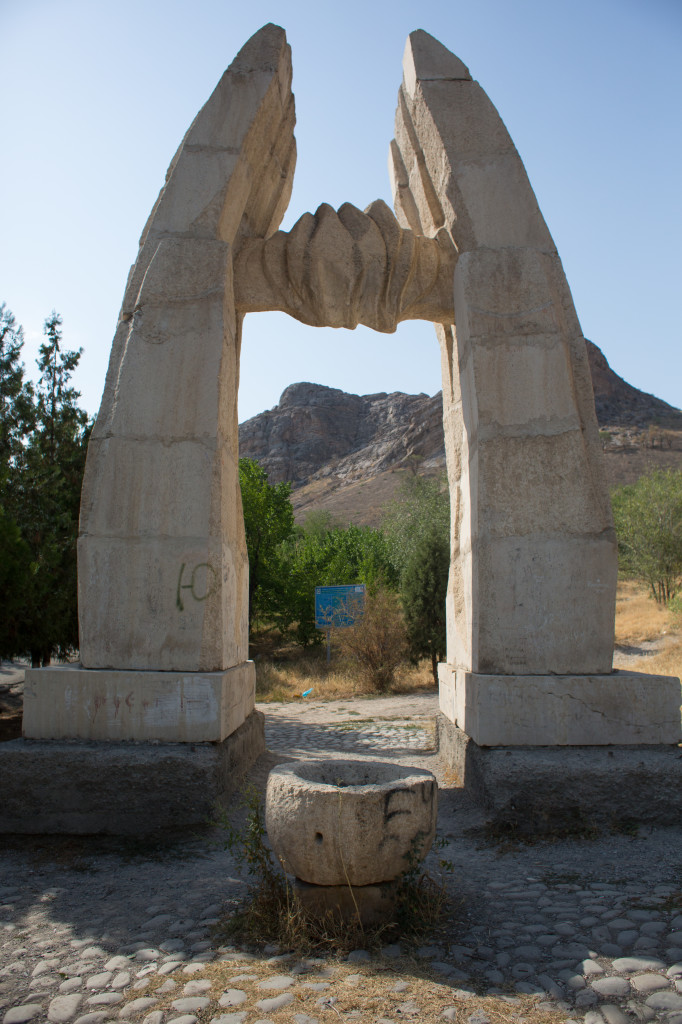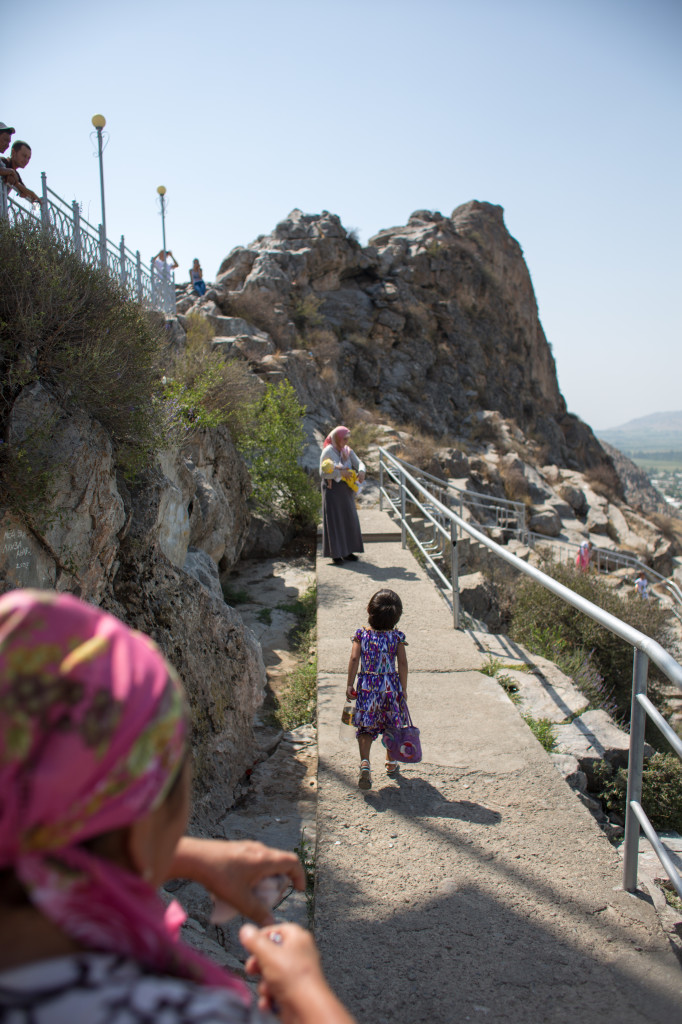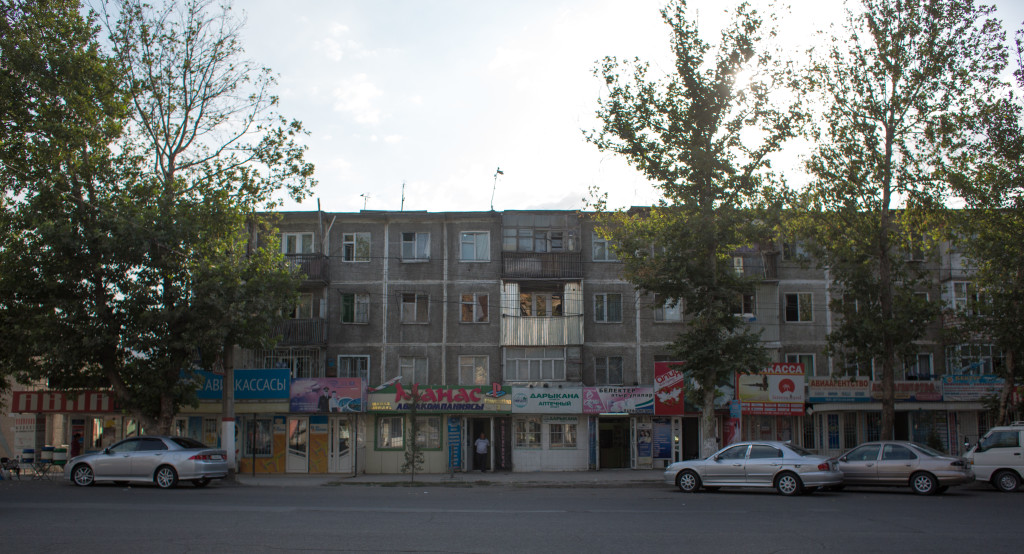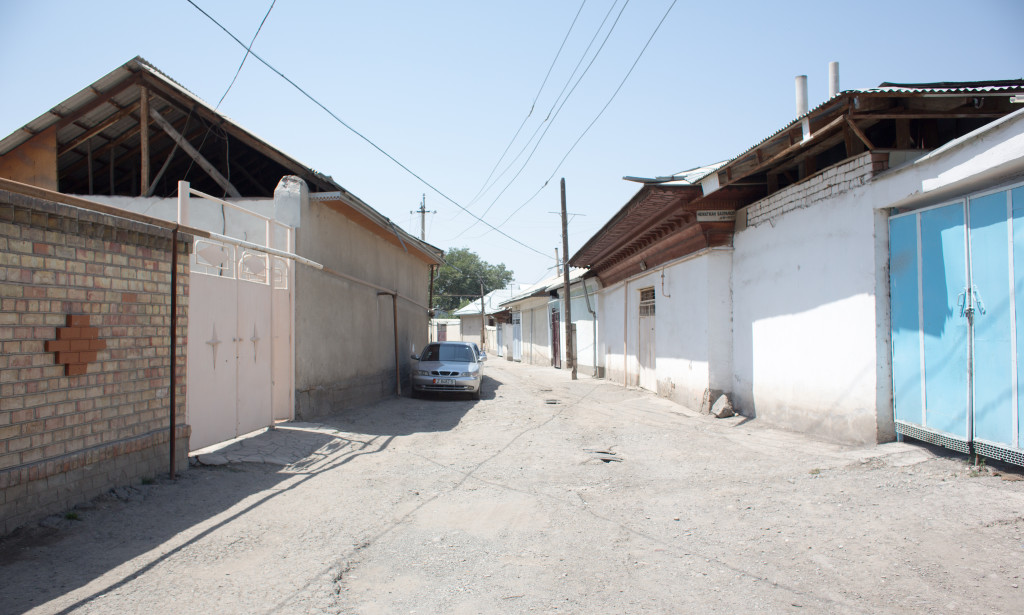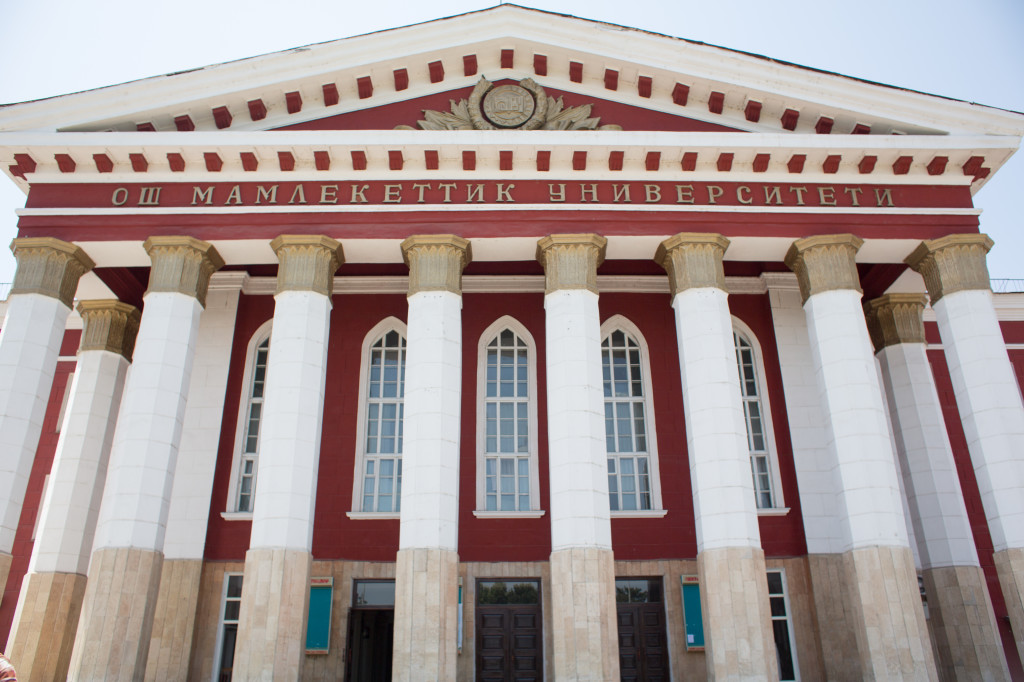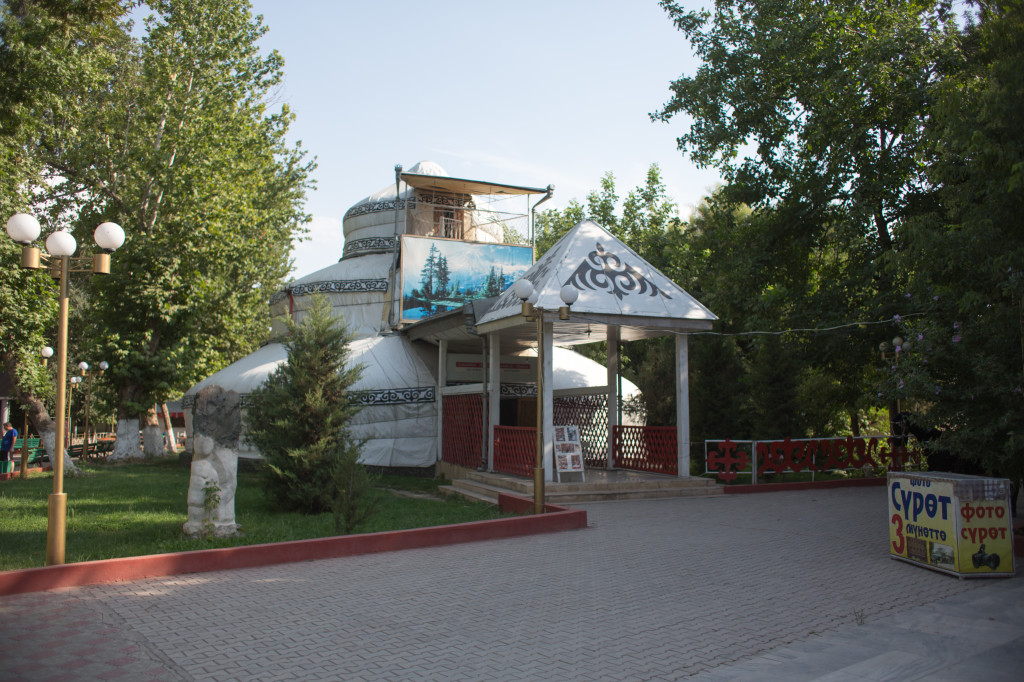Osh is a city of ancient glory and modern tragedy. Situated at one end of the Fergana Valley, a rich agricultural area that has long been one of the hubs of civilization in Central Asia and was a major node along the Silk Road, Osh has long attracted travelers to its markets.
Solomon and Babur are both claimed as residents by ancient Osh. Babur was a Central Asian prince who lost his empire and was forced to sit and think about the meaning of all that while he was in Osh. While out of power, he built a small pavilion on top of Sulayman Mountain, located just outside the heart of the city. The pavilion now looks like a small cottage cut into the side of one of Sulayman Mountain’s peaks. Apparently, the time thinking in this pavilion did Babur some good. Though he failed to recapture his Central Asian homelands, he did manage to invade Afghanistan, capture Kabul and found the Mughal Dynasty, which went on to conquer all of India and build the Taj Mahal.
Though Jerusalem is a two-thousand mile journey to Osh, Solomon is also claimed as a former resident by the people of Osh. Local legend says that Solomon came to Osh after retiring as King of the Israelites, and that he meditated in a small cave just a few hundred feet down from Babur’s pavilion, which we got the chance to explore.
From the cave’s entrance, we crawled on our bellies across the silk-smooth stone pathway that had been slid over by thousands before us. As we moved in deeper, the daylight grew dimmer. The cave’s height varied; some points were wide enough to sit up, but some points squeezed less than a foot wide. We turned a corner, and daylight completely disappeared. All we could see was a single candle flickering in the blackness. The light from the candle penetrated so little, we could not tell if the cave ended or continued past it. We could barely see the smooth stone we were crawling on, polished over thousands of years to the point that it felt like a playground slide.
Suddenly, as I was pulling myself towards the candle light, I realized there were a handful of Kyrgyz a few inches from my face. The cave was so dark, the Kyrgyz so quiet, that I had not noticed them. We shuffled out of the way, letting them pass. Beyond them, another candle flickered through another small mouth deeper in the cave. We crawled a dozen more feet to the candle, where, as best as we could feel, the cave ended.
The crawl was dark and disorienting. The history of the cave was literally palpable, touchable in the smoothness of the rock path. I had never felt any place so reminiscent of a womb. I doubt Solomon had ever made the crawl, but clearly this cave had been a place of meditation for thousands of years. More likely, it had been a place of meditation of the ancient gods and, with the arrival of Islam, the locals folded this ancient Osh belief into their new religion, choosing Solomon as a replacement for the ancient pagan sages.
Yet, for all Osh’s ancient glories, the city has recently fallen on hard times. North and south Kyrgyzstan are starkly different places. The north is richer and more closely connected with Russia, the south is poor and more Kyrgyz. In 2010, rioting broke out in Osh, the hub of the south, after a coup that was possibly engineered by Russia’s spy service and taken advantage of by northern Kyrgyz. The rioting destroyed much of Osh. Wandering through the city, we came across burnt-out husks where buildings had once stood.
Despite these riots, much of the city’s architecture remains, and each building tells a story about Osh’s development. Architecture is clearly delineated between buildings built during each era in Soviet history-Stalin, Khrushchev, Brezhnev-and each style came with a unique reason why you would not want to live there (“the Khrushchev apartments…you’ll hear every door slam…the walls are so thin”).
The Uzbek side of town is different from that found near the Soviet apartments. Uzbeks make up a significant portion of the population of Osh (the city’s center is only four miles to the Uzbek border), and their section reflects the longer history of a sedentary lifestyle among the Uzbek people. The Uzbek neighborhood feels just like a neighborhood. Everyone knows your business. Fences encircle small houses with small yards filled with fruit trees, marked by gates with neighbors entering whenever it is open.
After the Uzbek part of town, we wandered into city’s center, around the university. Here they had grand old buildings that looked relatively well-built and expensive. The Stalinist architecture was almost scary, the way it made you feel small and unimportant as you approached it, the cold angles and the looming magnitude of the building. As we were taking photos, a security guard heard that we were Americans, and laughed, saying, “American spies,” before he disappeared.
Despite the bumps Osh has experienced, or perhaps because of them, the city has something attractive about it that is difficult to put my finger on. In later posts, we will talk about Bishkek, Kyrgyzstan’s capital and the hub of the north of the country. Though smaller and more provincial, I liked Osh more. The people were friendlier, the city more real and the contrast between ancient glories and modern scars made the city a great place to explore.
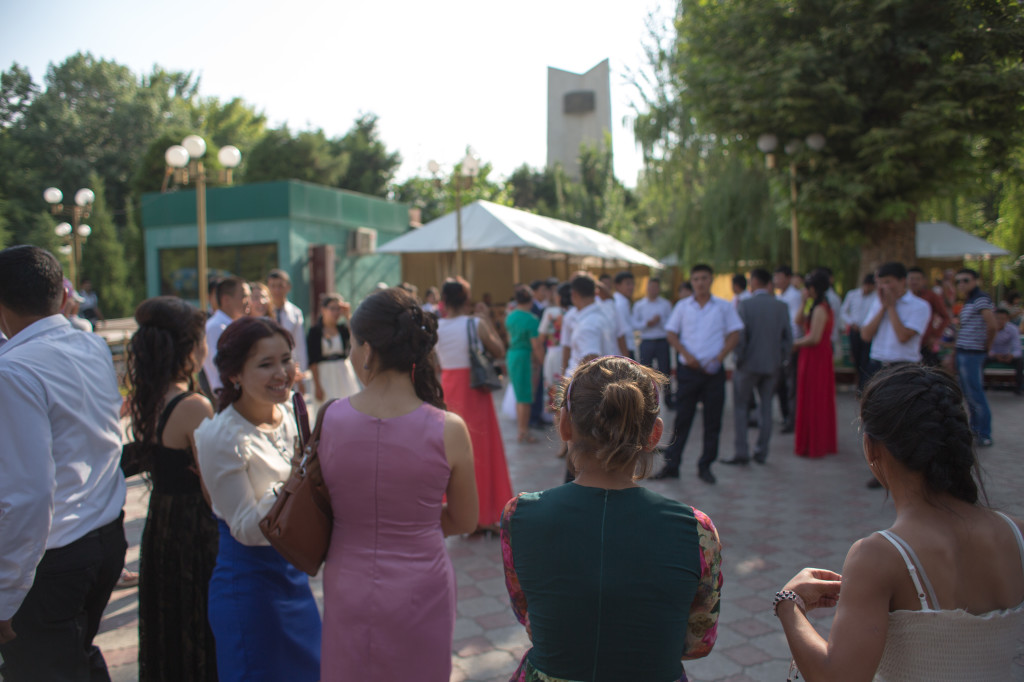
Galen started dancing with a wedding party we ran into , and he was invited to the wedding, though, he had to turn the invitation down.
A Plug: Our tour of the city was by a local guide named Chyngyz Ametov. He was a great guide for a tour around the city, he speaks several different languages (when we arrived at the Taj Mahal, he was speaking French with some Quebecois over shawarma). Beyond day-long city tours, he does longer tours to the lands of nomadic Kyrgyz tribes. I would definitely recommend talking to him if you are interested in doing anything in Osh or southern Kyrgyzstan.
Contact him here:
chyngyzametov@mail.ru
oshchyngyz@rambler.ru
